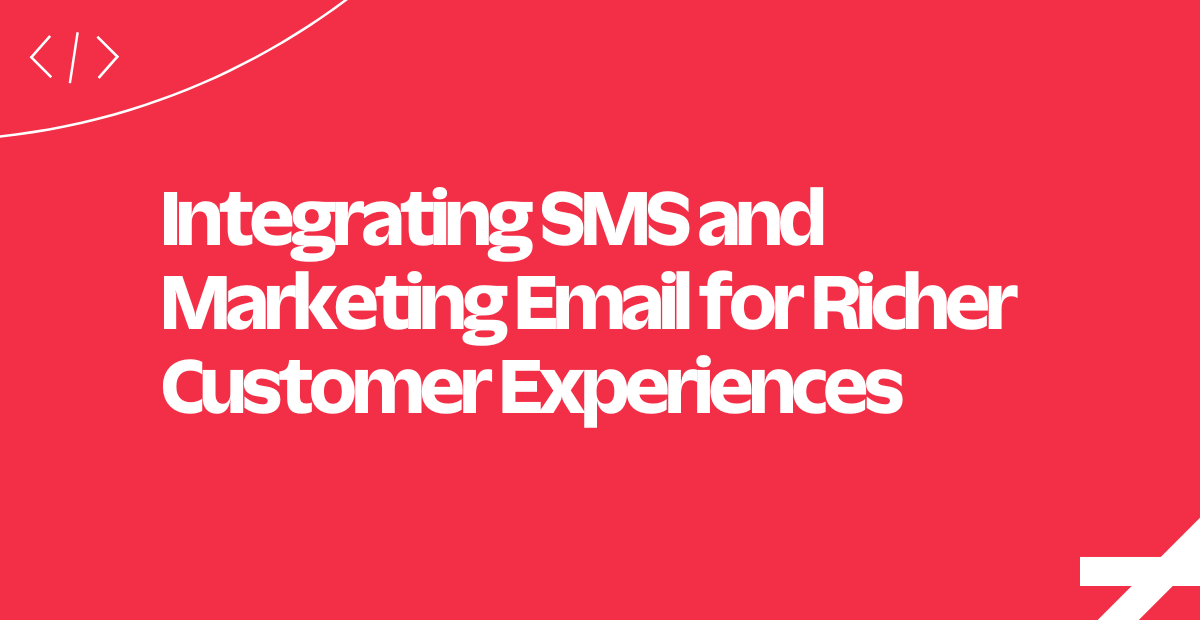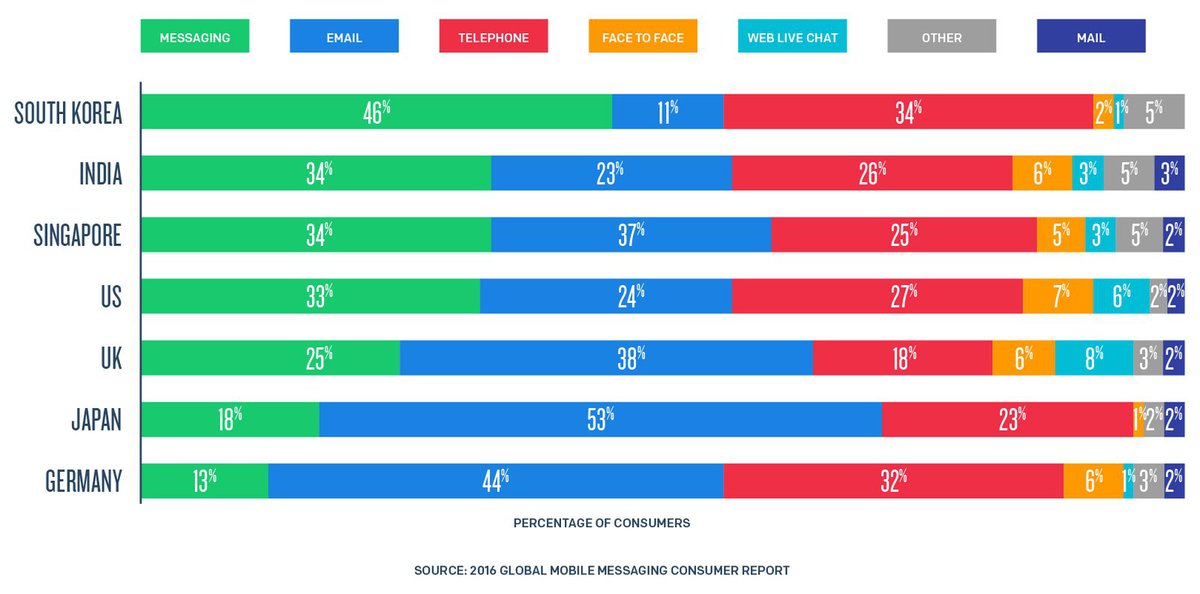Integrating SMS and Marketing Email for Richer Customer Experiences
Time to read:
This post is part of Twilio’s archive and may contain outdated information. We’re always building something new, so be sure to check out our latest posts for the most up-to-date insights.

Businesses using SMS and email together have a powerful opportunity to reach their customers through targeted messages that improve their overall experience. Just like SMS, email is extremely useful for the operation of your business, and when you combine them, your communication is more powerful. Email and SMS work in tandem to provide your contacts with messages that reinforce each other. In fact, email is also the most preferred channel for consumers:

By using multiple communication channels together, you create a seamless, connected experience for your customers, one that inspires trust and ensures they look forward to your messages.
Email and SMS together amplify your engagement efforts for every part of the customer lifecycle. Here are some of the most common uses cases for leveraging SMS in addition to email:
Reminders
A reminder is a perfect example of how SMS can enhance your existing communication plan with your customers. If your customers have already received a booking confirmation, sending another email the day before or the day of their appointment, trip, or reservation may be overkill.
Unfortunately, customers that don’t receive a reminder may not show up, leading to lost revenue and an unhappy customer. A concise SMS can be the perfect prompt for them to check their calendar and follow through.
Alerts
Use SMS to inform your customers and account holders if security-related actions have been performed in their account, if there’s a public safety announcement, or if there’s a relevant neighborhood update.
You’ve probably received similar SMS messages after changing your email or password. Alerts like these are not only wanted by customers, they’re expected. The SMS API even allows you to program repeat updates, like weekly account balances—if your customers want them!
Confirmations
For many customers, a confirmation message is an essential communication they want to receive after placing an order online or making an account update. It lets customers know that your company has received their order or has accepted the changes they’ve made to their account.
What happens if that customer no longer uses their email address? Or perhaps the confirmation isn’t delivered to the inbox correctly? With an SMS, you can add an extra layer of communication, and text the confirmation to your customers.
Notifications
Like a reminder, a notification is the perfect email enhancement. It may be excessive or unwelcome to send yet another email to your customers if a shipment has been sent, or if an order is available for pickup. An SMS in these situations can be the perfect way to communicate a real-time update to your customers.
For most people, a mobile device is on-hand all the time, which makes an SMS notification even more valuable if you’re looking to communicate with customers immediately. Below are common use cases for combining email and SMS across the customer lifecycle.
Multichannel marketing
Use email and SMS together to create longer, multichannel promotional marketing campaigns, and new customer onboarding messages personalized with rich imagery. Popular industry use-cases include:
- Retail companies using email and SMS to send catalogs and discount codes during sales periods and to entice past customers to return;
- Travel and hospitality companies using these channels to send hotel deals and travel newsletters, customized to their customer’s location and past activity;
- Media and publishing companies use these channels to send subscription offers and article features based on past browsing history.
Sales confirmations
For many customers, a confirmation message is an essential communication that they want to receive after booking an appointment, purchasing a ticket, or making a reservation.
Whether sent via SMS or email, it assures customers that their transaction has been processed. Depending on the type of sale, invoice, or delivery confirmation, an email may be be better suited so that the customer can archive the transaction. Smaller orders, like a food delivery confirmation, may be better received as an SMS.
Customer service
Email is the more suitable channel for customer inquiries that require a detailed exploration and diagnosing a problem. Sending support tickets via email creates a record for an ongoing issue that requires multiple days to resolve, and allows for customers to submit images to help customer service understand and possibly diagnosis a problem faster. For field service, SMS is the preferred way to send an appointment reminder and keep customers updated on the status of a technician’s arrival.
Email and SMS share many similarities
While both communication channels are often used for critical messages to your recipients, there are some key factors that differentiate email and SMS, as well as some they share:
What to consider when adding SMS
The most important thing to know when it comes to implementing a new SMS channel is that the most effective SMS program is used to enhance your emails, not replace them. SMS and email are used for many different types of communication, but ultimately, your customers want both!
The best way to determine how to include SMS into your communication strategy is to ask two questions:
- How quickly should the recipient receive the message?
- How business-critical is the content of the message?
Depending on your answers to those questions, and how much imagery, branding, or design your messages require, you can quickly map how you should get your message out, and by what channel.
In some cases, email and SMS together is best. In a situation where there’s been a potential security breach, you want to inform affected customers immediately. This is a good example of where sending messages across both channels is necessary. For something like a Quarterly Marketing Campaign, though, you’ll need to have branding, refined messaging, and a clear call to action. Email makes the most sense here.
What to consider when adding email
When implementing a new email channel, keep in mind that the most effective email program is used to complement SMS, not replace it. Email and SMS are channels that can serve different purposes for your business, working together to inform customers, and encouraging them to take action. A restaurant reservation confirmation with full event details sent via email can be followed-up with an SMS reminder an hour before the reservation time to help reduce no shows, for example.
The best way to determine how to include email into your communication strategy is to ask three things:
- How time-sensitive is the message?
- Does the message include rich imagery?
- Is the message recurring on a consistent schedule?
Read how to create an email strategy that avoids customers' spam folders.
As the number of communication channels used by customers grows, it’ll become increasingly important to send messages and information where those customers want to receive it. Implementing a strategy that uses SMS and email is critical for any company who wants to have a conversation with their customers.
Related Posts
Related Resources
Twilio Docs
From APIs to SDKs to sample apps
API reference documentation, SDKs, helper libraries, quickstarts, and tutorials for your language and platform.
Resource Center
The latest ebooks, industry reports, and webinars
Learn from customer engagement experts to improve your own communication.
Ahoy
Twilio's developer community hub
Best practices, code samples, and inspiration to build communications and digital engagement experiences.


